Earth-directed Coronal Mass Ejection from the M4.5 solar flare
Tuesday, 9 September 2014 15:05 UTC
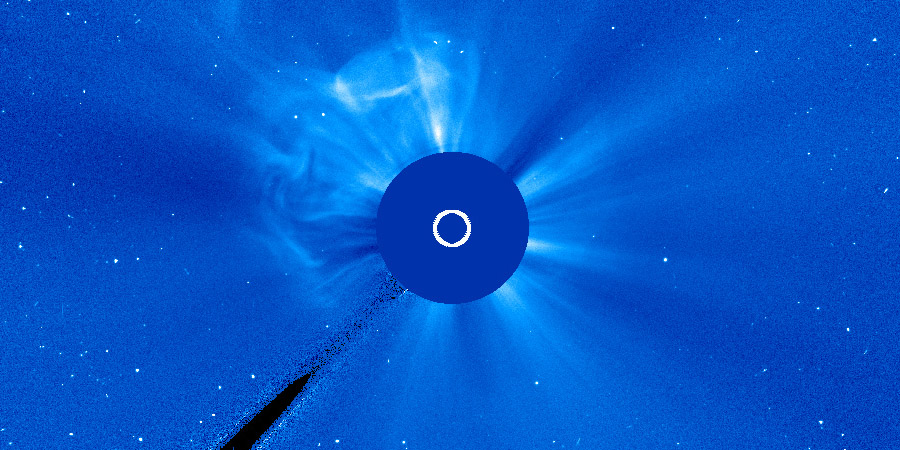
Coronagraph imagery from SOHO/LASCO is now complete and shows that the Coronal Mass Ejection (CME) that was launched during the M4.5 solar flare from this past night has an earth-directed component.
The animations below show the CME from Earth's perspective as seen by both SOHO/LASCO C2 and C3. A clear expanding asymmetrical full halo outline is visible but the bulk of the material is heading north-east and thus away from Earth. This means that a large portion of the magnetic cloud is not heading towards Earth but a glancing blow can still be expected here at Earth with enhanced auroral activity being likely after the cloud arrives.
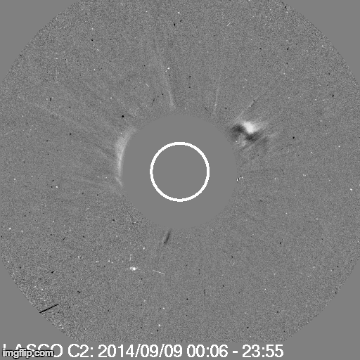
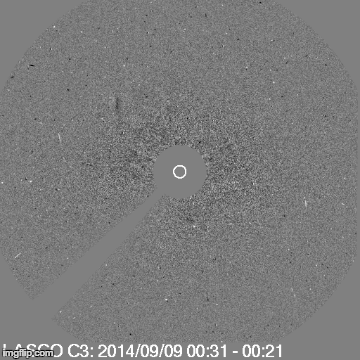
The speed of the Coronal Mass Ejection was measured to be around 700km/s which means the CME could arrive at Earth early on September 12. A minor G1 geomagnetic storm could develop after the CME arrives with a slight chance for moderate G2 geomagnetic storm conditions if the direction of the IMF cooperates for a prelonged period.
The NOAA SWPC has also issued a forecast that seems to agree fairly well with our forecast. Below you will find the predicted Kp-indices for September 10 untill September 12 as published by the NOAA SWPC:
| 00-03h | 03-06h | 06-09h | 09-12h | 12-15h | 15-18h | 18-21h | 21-00h | |
|---|---|---|---|---|---|---|---|---|
| 10 September | 2 | 3 | 2 | 2 | 2 | 1 | 2 | 3 |
| 11 September | 2 | 1 | 1 | 1 | 1 | 1 | 2 | 2 |
| 12 September | 2 | 4 | 6 | 5 | 4 | 4 | 3 | 4 |
All times in UTC
Sunspot region 2157 analysis
Active Region 2157 is the most complex region on the disc, retaining it's two magnetic delta structures, the trailing spots are drifting away from the leader part. However the delta spots are not that compact so the tension within the spot is quiet and thus also only small flares have been observed from this region. Nevertheless, the chances for an M-class event still remain.
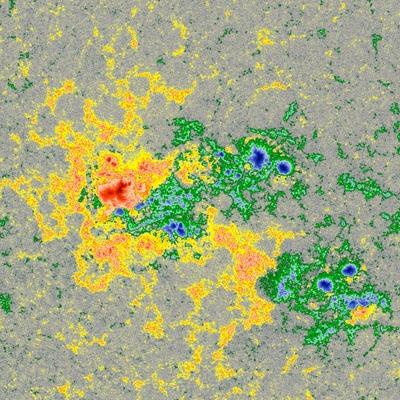 |
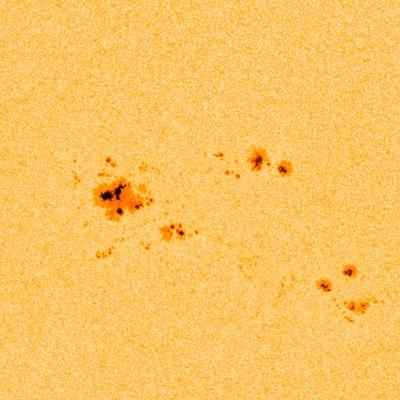 |
Sunspot region 2158 analysis
Since the M-class flare of this past night, this active region started to decay losing penumbral area and it's delta spots are separating themselfs from the leader spot. The chances for another strong solar flare are declining. It looks like it might be over and out for this sunspot group...
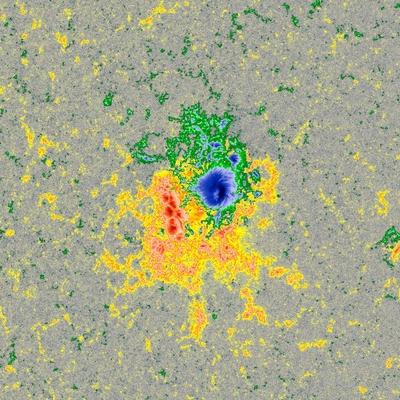 |
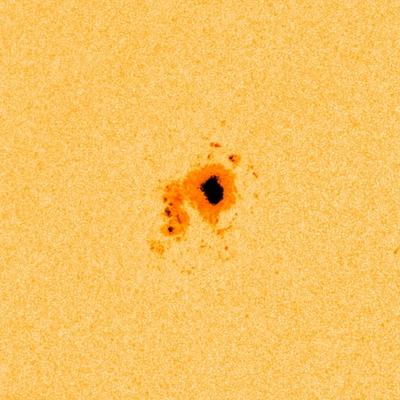 |
M-class flare probability: 25% chance
X-class flare probability: 5% chance
Thank you for reading this article! Did you have any trouble with the technical terms used in this article? Our help section is the place to be where you can find in-depth articles, a FAQ and a list with common abbreviations. Still puzzled? Just post on our forum where we will help you the best we can!
Latest news
Latest forum messages
Support SpaceWeatherLive.com!
A lot of people come to SpaceWeatherLive to follow the Sun's activity or if there is aurora to be seen, but with more traffic comes higher server costs. Consider a donation if you enjoy SpaceWeatherLive so we can keep the website online!

Space weather facts
| Last X-flare | 2024/03/28 | X1.1 |
| Last M-flare | 2024/04/19 | M1.0 |
| Last geomagnetic storm | 2024/04/16 | Kp5 (G1) |
| Spotless days | |
|---|---|
| Last spotless day | 2022/06/08 |
| Monthly mean Sunspot Number | |
|---|---|
| March 2024 | 104.9 -19.8 |


